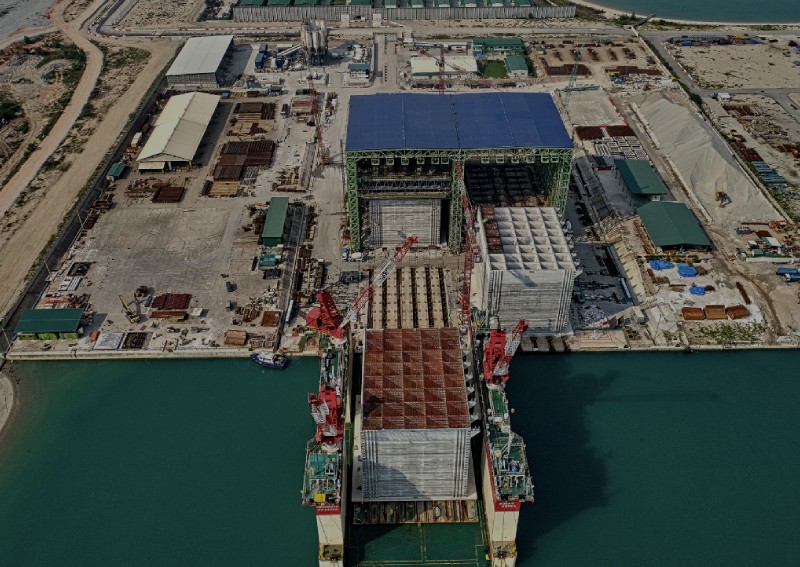Full steam ahead: Tuas mega port officially opens with 3 berths

SINGAPORE - Three berths are now in operation at Tuas Port, which is set to be the world's biggest fully automated port when completed in the 2040s.
There are about 500 people already working at the port.
With work mostly done by unmanned machines that run on cleaner electricity, the $20 billion facility is set to be a "game-changer" in Singapore's port and supply chain operations, operator PSA said at the official opening of the new port on Thursday (Sept 1)
The port's eventual handling capacity of 65 million twenty-foot equivalent units (TEUs) - a unit of measurement for containers - will make it the world's biggest - a one-third increase from Singapore's current capacity and larger than ports operated by competitors in Shanghai, Hong Kong and Amsterdam.
"Today marks the exciting beginning of a new era," said Mr Peter Voser, group chairman of PSA International. "Tuas Port is where we can help to realise the immense potential of Singapore as a trade hub for the world."
Operations at Tuas Port started in September last year, when two berths were opened to help increase Singapore's storage capacity during the supply chain crisis.
A total of five berths should be operational by year end. In the next two decades, the new port is expected to create thousands more jobs for the maritime sector, which is now enjoying a boom with freight volumes at record-high levels.
Operations at Keppel, Brani, Pasir Panjang and Tanjong Pagar will be progressively shifted to Tuas.
[[nid:592932]]
Speaking at the official opening, Prime Minister Lee Hsien Loong said Tuas Port will be a critical engine driving Singapore's economy, reinforcing its status as an international maritime centre and enabling related industries in ship finance, marine insurance, maritime law and others to flourish.
It will also make port services cheaper for the many industries in western Singapore, including the nearby Jurong Industrial District, the Jurong Lake District and the Jurong and Tuas industrial areas.
"Being closer to the port means faster and cheaper port services," he said. "This means more efficient production, and quicker turnaround for their products to be exported to international markets."
Sectors such as advanced manufacturing, e-commerce and logistics will benefit the most.
Being fully automated, "Tuas Port will assure our international partners and shipping lines that Singapore can handle increasingly complex operations of the future", said PM Lee, who spoke about Tuas Port at his recent National Day Rally speech.
He said on Thursday: "Our decision to press on with Tuas Port sends a strong signal to the world that Singapore is open for business... We are going full steam ahead."
A third of global container trade and a quarter of the global seaborne oil trade pass through the straits of Malacca and Singapore each year.
Last year, Singapore handled a record 37.5 million TEUs of containers, the most in the world.
It will likely need at least 60 million TEUs of capacity by the 2040s.
This article was first published in The Straits Times. Permission required for reproduction.